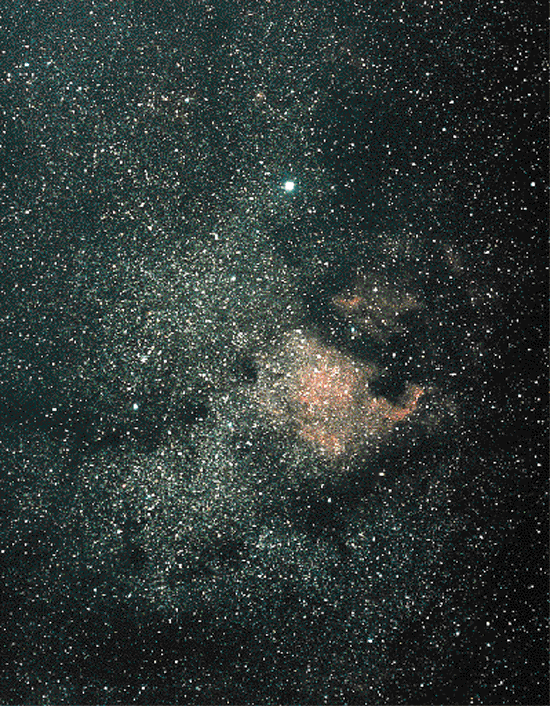
This spectacular image of the Sun was made by capturing X-rays emitted by our star's most active regions. It was taken by a camera on a rocket lofted shortly before the total solar eclipse of July 1991. (Note the shadow of the Moon approaching from the west, at top.) The brightest regions have temperatures of about 3 million kelvins.
Studying this chapter will enable you to:
Explain how stellar distances are determined.
Discuss the motions of the stars through space and how these motions are measured from Earth.
Explain how physical laws are used to estimate stellar sizes.
Distinguish between luminosity and brightness and explain how stellar luminosity is determined.
Explain how stars are often classified according to their colors, surface temperatures, and spectral characteristics, and tell why such a classification is useful.
State how an H—R diagram is constructed, and summarize the properties of the different types of stars that such a diagram helps us to identify.
Explain how the masses of stars are measured and how mass is related to other stellar properties.
Distinguish between open and globular star clusters, and explain why the study of clusters is important to astronomers.
We have now studied Earth, the Moon, the solar system, and the Sun. To continue our inventory of the contents of the universe, we must move away from our local environment into the depths of space. In this chapter we take a great leap in distance and consider stars in general. Our primary goal is to comprehend the nature of the stars that make up the constellations, as well as the myriad more distant stars we cannot perceive with our unaided eyes. Rather than studying their individual peculiarities, however, we will concentrate on determining the physical and chemical properties they share. There is order in the legions of stars scattered across the sky. Like comparative planetology in the solar system, comparing and cataloging the stars play vital roles in furthering our understanding of the Galaxy and the universe we inhabit.